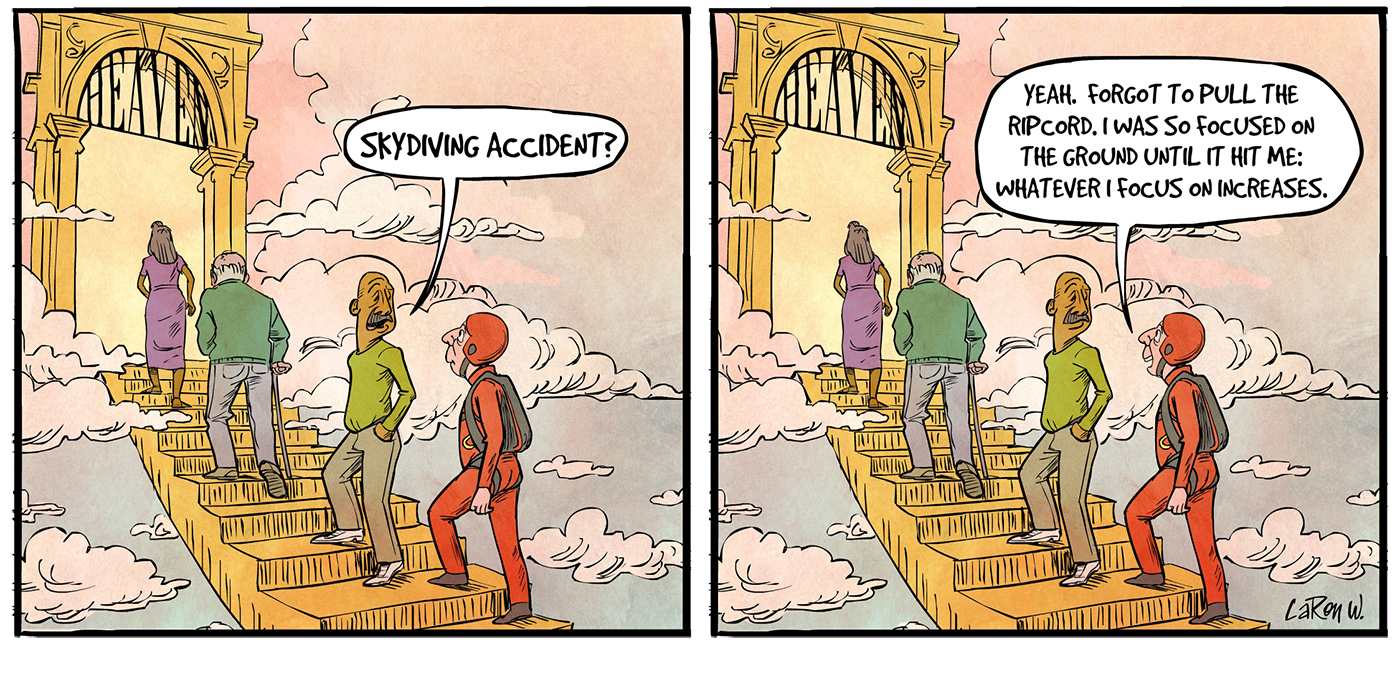In July 2011, our 6:30 group (under the Nashville Intergroup) decided to have monthly speaker meetings. One of the first talks was on Step Four. The speaker focused on the Big Book pages on how to work Step Four (AA 64-71), and as he went along, he shared his personal experience related to working each phase of the Step. On the topic of resentment, he read, “Sometimes it was remorse and then we were sore at ourselves” (66), and shared that this idea—resentment turned inward—seems to be describing shame. He then suggested that for some members, a shame inventory (along with the other inventories mentioned in the Big Book) might be helpful. This struck me quite strongly. I knew that I carried a lot of shame and that shame blocked me from doing many things that I knew my Higher Power wanted me to do. One of those things was completing my Fourth Step. I had been working on my resentment and fear inventories but kept having trouble moving forward. So I asked my sponsor what a shame inventory might look like. He said he didn’t know but said that it likely would look similar to the resentment and fear inventories. He suggested that I ask my Higher Power for guidance.
For a few days nothing came to me. Then, as I was walking to work one morning, a question from my Higher Power came to me. He asked, “Does this shame help you to carry out My will for you?” This was a profound question, and I realized that the obvious answer was “No.” Throughout the morning, ideas for the column headings of a shame inventory came to me. I started by using several of the columns from AA’s resentment and fear inventories (AA 65). By the end of the day, I had a plan for preparing a shame inventory. My sponsor suggested some changes. He then suggested that I try the inventory out on some of my own shameful events that continued to haunt me.
I took several days working through the inventory—but when I was finished, I felt that a huge burden had been lifted off my shoulders. And I was amazed that, when I picked up where I had left off on my resentment and fear inventories, they were now easy to complete! I no longer had that invisible barrier (which I now know was shame) holding me back from finishing.
I have shared the shame inventory with several dozen members. Their experiences have been similar to mine. We have found that not every member suffers from problems with shame. But those of us who do have found that this shame inventory has helped us work the rest of Step Four. So in the spirit of the Fifth Tradition (to carry our message to the sexaholic who still suffers), we decided to write down our experience and share it with our brothers and sisters in the fellowship.
Mark V., Nashville, TN
Step Four Shame Inventory
Early in our Step work, especially while working Step Four, some of us were blocked by an unknown force. We had been warned that our pride could be a barrier here. But this strange phenomenon seemed different. Instead of leading us to believe that we were better than others, as pride will always do, this led us to think that our unique situation somehow made us worse than everyone else.
The AA Twelve Steps and Twelve Traditions offers this insight: “If temperamentally we are on the depressive side, we are apt to be swamped with guilt and self-loathing. We wallow in this messy bog, often getting a misshapen and painful pleasure out of it. As we morbidly pursue this melancholy activity, we may sink to such a point of despair that nothing but oblivion looks possible as a solution. Here, of course we have lost all perspective, and therefore all genuine humility. For this is pride in reverse” (12&12 45).
We heard others talk of their experience with this “pride in reverse.” Many of them called it shame. We identified with them, and we were grateful to have a name for what we were experiencing. But what we wanted even more was a solution, for this shame seemed to be way too much for us to bear.
Then one day a glimmer of hope came to us. Could it be that the solution for shame was the same as the solution for lust? Could we simply turn over our shame to a power greater than ourselves? We remembered the times that God had been faithful to us in the past. Our Higher Power truly did for us what we could not do for ourselves. This problem with shame was no different, we thought—and that was a great turning point for us.
Inspired, we were ready to pick up the pen once more and look again at Step Four. Recognizing that shame had been one of our own moral failings, some of us went about doing an inventory on it. But bitter experience taught us that we had to be careful here. A shame inventory does us no good if we simply write a list of the humiliations we have endured. “This is not a moral inventory at all; it is the very process by which the depressive has so often been led to [lusting] and extinction” (12&12 45).
So we had to make sure that we adhered to the principles of a proper moral inventory. At times, shame looked a lot like resentment: “Sometimes [resentment] was remorse and then we were sore at ourselves” (AA 66). Could it be that our shame was nothing more than our being resentful of ourselves? It seemed so.
But it also seemed to be more than that. After all, when we read further, we noticed that our shame took on a lot of the elements of fear as well: “[Fear] was an evil and corroding thread; the fabric of our existence was shot through with it. It set in motion trains of circumstances which brought us misfortune we felt we didn’t deserve. But did not we, ourselves, set the ball rolling?” (AA 67)
Indeed, fear fed the flame of the shame that burned in our souls. A real inventory of shame would need to focus on both our resentment and our fears at the same time.
Some of us devised a shame inventory that combined both the resentment and fear inventories found in AA. We used a notebook and opened to two blank pages. We made eight columns, allowing more space to write in the second and fifth columns. We labeled each column as follows:
- The Event
- The Cause
- Affects my _________
- Does this shame help me carry out my Higher Power’s will for me?
- What does my Higher Power want me to be instead of carrying this shame?
- Am I willing to become what my Higher Power wants me to be?
- Harm done to others?
- Prayer
As we worked this shame inventory, it was important to remember that we were working in an emotional area. As our White Book reminds us, “Human emotions do not travel in straight lines, they zigzag all over. It was not necessary to slavishly follow someone else’s outline, format, or procedure” (SA 109).
Sometimes we worked straight down a column. At other times it seemed better to work horizontally, taking one single shameful event through all eight columns. Either way the goal was the same: to remove some of the blockage of shame so that we could continue on.
In the first column, we wrote a couple of words to help us remember when and where the shameful event occurred. If the shame was a recurring event, we noted where or when it happened most often. The second column was a brief description of what happened. In the third column, we recorded the parts of our lives affected by the shame, such as our self-esteem, security, ambitions, or personal or sex relations (see AA 65).
In the fourth column we asked our Higher Power whether holding on to this shame would help us carry out His will for us. Usually, the answer was “No.” However, if we found ourselves answering “Yes,” we found it wise to review our work with Step Two, because a “Yes” answer here might indicate that we did not believe in a Higher Power who had our best interests at heart. Our sponsors often recommended that we fire such a Higher Power immediately, because that may be no Higher Power at all, but merely a projection of our own self-loathing (and a slow path back to destruction).
In the fifth column we asked our Higher Power what we should do instead of carrying this shame, and we prayed to know our Higher Power’s vision for us. We were prepared to write down all the answers that came to us. In the sixth column, we indicated whether we were willing to move toward the goal of our Higher Power’s vision of us. If we honestly could not say “Yes” in this column, we believed that was an indication that we needed to stop our shame inventory work and talk to our sponsor or a trusted friend in recovery. Often we realized that we needed to re-examine our work in Step Three.
In the seventh column, we asked whether we had harmed someone else in the shame event. A “Yes” would mean leaving a bookmark here, for us to return to as we worked Steps Six, Seven, Eight, and Nine. Finally, in column eight, we released the shame of this one event to our Higher Power. Some created their own prayer for doing this. It was usually something like this:
“God, You have given me courage and clarity to open a place in my heart to receive Your presence. The shame of [this event] helps me to realize how sick and cut off from You I was. I am ready to let You change me into what You want me to be without this shame. God, I need mercy and forgiveness. I believe You give it freely, and I will receive it gratefully. I also know that I need to forgive myself. Whatever You want of me, I am willing to do.”
When we were praying, we paused from time to time to let our Higher Power speak to us. This was sacred ground for us; our Higher Power was actually doing for us what we had imagined would never be possible. Our shame was actually disappearing! We repeated the prayer as often as necessary. When we were ready, we checked the eighth column to indicate that the task was complete. Each completed surrender gave us the courage to write down the next, even more shameful event, and work through that one in the same fashion. We experienced the miracle all over again! We repeated this process until we could remember no more shameful events in our lives.
“Once we have a complete willingness to take inventory, and exert ourselves to do the job thoroughly, a wonderful light falls upon this foggy scene. As we persist, a brand-new kind of confidence is born, and the sense of relief at finally facing ourselves is indescribable” (12&12 49-50).
Developed by Nashville, TN 6:30 Group
Inventory available for download at http://tinyurl.com/ShameInventory.






